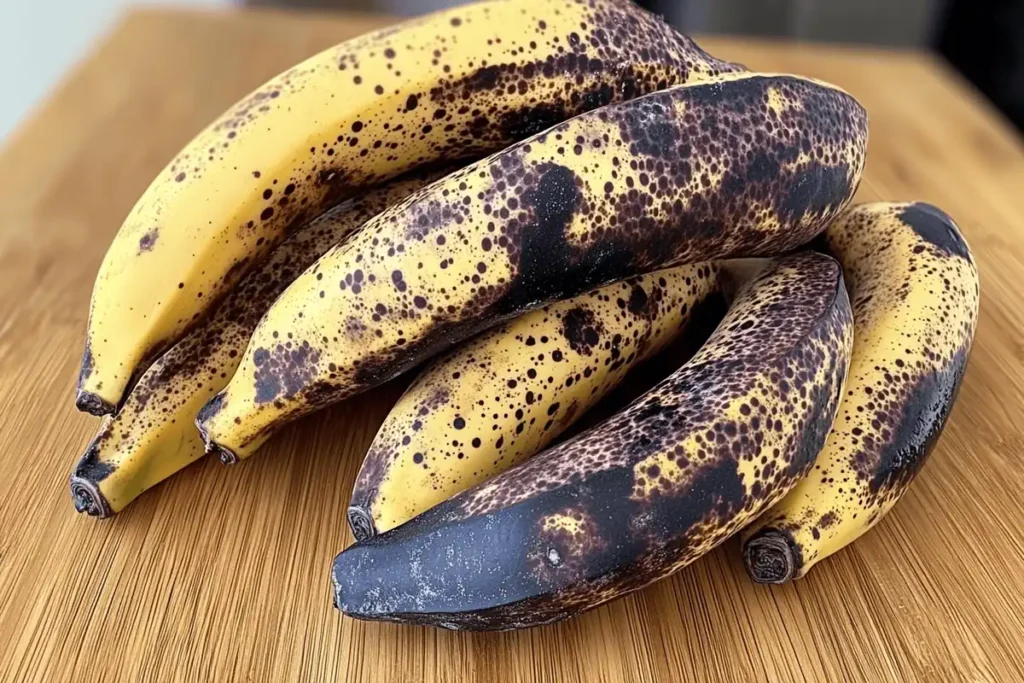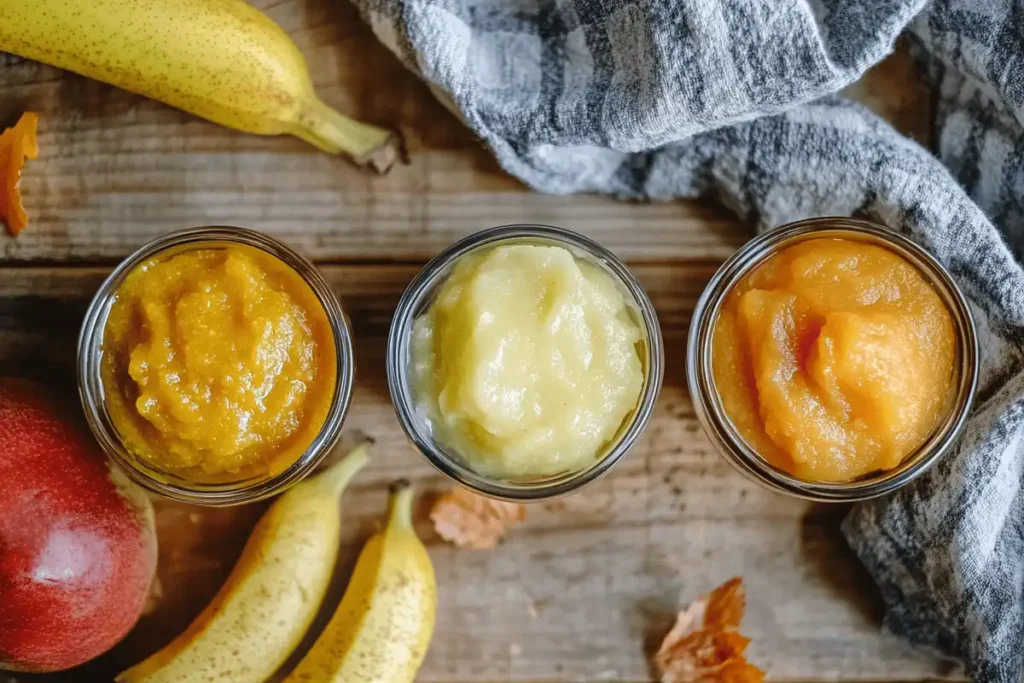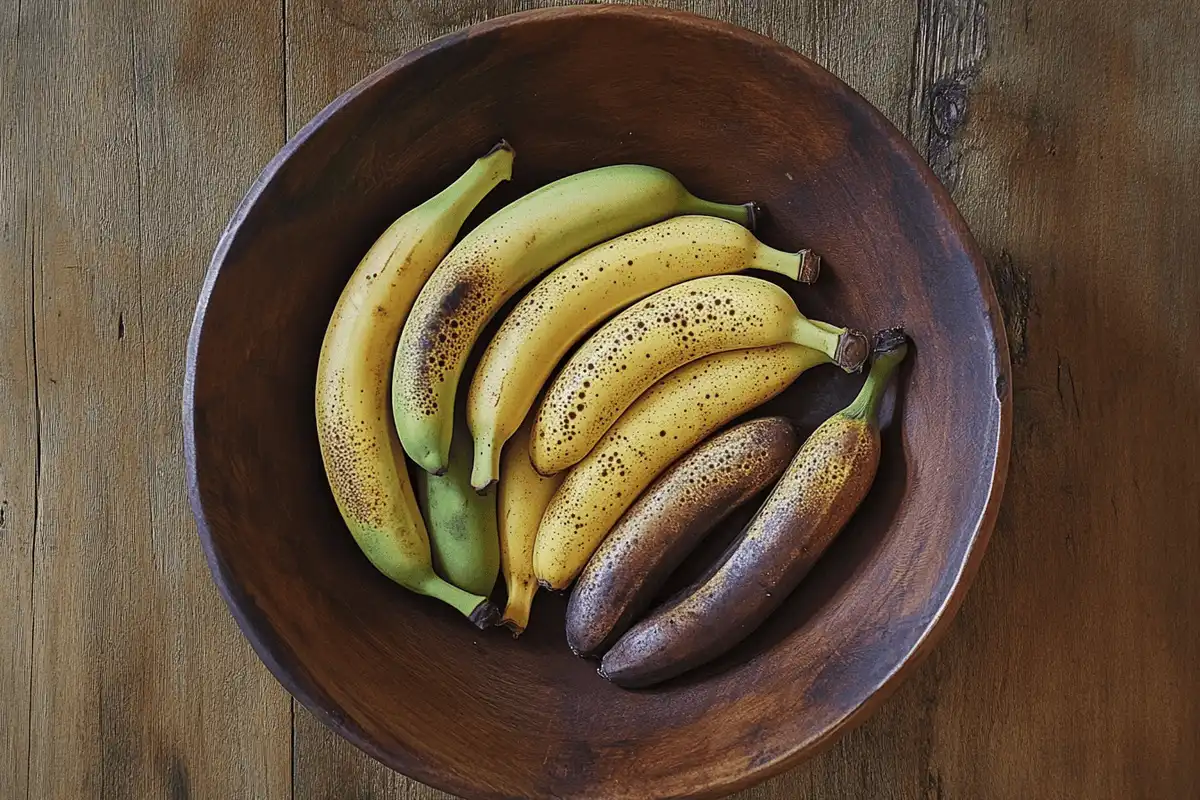Are you eager to bake the perfect banana bread? This article helps you understand when bananas are not suitable for baking, ensuring each loaf is delicious. Learning the nuances of banana ripeness is vital for achieving optimal texture and flavor.
Banana bread is a beloved classic, often a go-to for using up ripe bananas. However, there are instances when bananas should not be used for bread. Understanding these situations can make the difference between a delicious treat and a baking disaster. Banana ripeness greatly impacts the final product. Accordingly, knowing when to avoid bananas is crucial. Before starting, remember that even when bananas look perfect, sometimes they might not be. You can check this guide to baking with overripe bananas from King Arthur Baking for extra tips to follow. Also, for more guidance on ripening and storing, consider this resource from the USDA, or this article from BBC Good Food on the topic.
In the upcoming section, we will explore the various stages of banana ripeness and how each stage affects banana bread. We will then delve into why certain bananas are not suitable for baking. This will ensure you consistently get the best results.
Table of contents
Understanding Banana Ripeness
The journey of a banana from green to overly ripe involves distinct stages. These stages significantly impact its suitability for baking. A banana‘s ripeness is categorized generally into four main levels. Firstly, there are green bananas, which are hard and lack sweetness. Secondly, you have yellow bananas, often with a firm texture. Thirdly, there are spotty bananas, perfect for baking, and lastly, overripe bananas, which are mushy and very sweet. Therefore, understanding these stages is crucial for baking.
The ripeness of a banana directly influences the flavor and texture of your banana bread. Underripe bananas, for instance, are firm and lack the natural sugars needed for sweetness. Ripe bananas, conversely, have a balance of sweetness and a soft texture, ideal for baking. Overripe bananas, on the other hand, become intensely sweet and mushy. Consequently, each ripeness stage dictates the outcome of the final product.
The ideal ripeness for banana bread is when the bananas have developed brown spots, indicating they’re ripe but not completely brown. These bananas provide the perfect combination of natural sugars and moisture. This adds to the flavor and moistness of the banana bread. Moreover, this level of ripeness also makes them easy to mash. Therefore, they mix smoothly into the batter.
Transitioning to the subsequent portion, we will discuss the specifics of when bananas are not suitable for bread. This section will highlight which bananas are best avoided.
When Bananas Are Not Suitable for Bread

Overly ripe bananas can ruin your banana bread.
While most bananas can be used for baking, certain bananas can ruin your banana bread. Specifically, green and overly brown bananas should be avoided. Additionally, any banana with a strange odor is definitely unsuitable. Accordingly, knowing what to look for will prevent baking failures.
Green Bananas
Green bananas are hard and lack sweetness, due to the high starch content. They simply have not developed their sugars. As a result, the banana bread will be dry, bland, and dense. Furthermore, it will lack the characteristic flavor and moisture. Therefore, using green bananas is a bad idea for baking.
Using underripe bananas will not give you a good flavor. Consequently, they are not suitable for baking. Although you might need to wait a bit longer, the difference between banana breads with ripe vs. unripe bananas is very noticeable. There is a clear difference in taste. Moreover, green bananas have a hard texture that does not mash easily. Thus, they won’t mix well into the batter.
However, you can utilize green bananas for other culinary uses. You can cook them, use them to make chips, or boil them. These options are better than using them in baking. Therefore, if you see your bananas are green, postpone your baking plans.
Overly Brown or Black Bananas
Overly brown or black bananas can be problematic. Even though they might seem usable, their quality degrades as they become very dark. Their intense sweetness and mushy texture will negatively impact the banana bread. The banana bread can become overly sweet and gummy. Furthermore, the flavor can become slightly fermented. Therefore, it is better to avoid very dark bananas when baking.
The bananas that have dark spots are perfect for baking. However, overly dark or black bananas indicate a breakdown in the structure of the fruit. The sugar content will be too high. Also, their mushy texture will not mix well with the rest of the ingredients. Additionally, they can release too much moisture. Thus, this will result in gummy or soggy banana bread. Therefore, using these bananas is not recommended.
Signs of overly brown bananas include dark spots, a mushy flesh, and sometimes, a fermented odor. These characteristics can easily be spotted. Also, if the bananas are very soft and squishy, then they are too far gone. Therefore, it’s best to discard them instead of baking with them.
Bananas with a Strange Odor
If a banana has a strange or off-putting odor, it should never be used in banana bread. An odd smell often indicates that the banana is rotting or fermenting. Accordingly, the taste will be unpleasant. The banana bread may have a bitter or sour aftertaste. Additionally, spoiled bananas can harbor bacteria. Thus, it’s best to avoid using them for baking.
Always test the smell of the bananas before using them. The smell of a good banana will be sweet and pleasant. Conversely, a banana that is starting to go bad will have a sharp, vinegar-like or fermented smell. Therefore, using these bananas could potentially ruin your whole banana bread. It is safer to throw it away.
In the next phase, we will look at the science of banana ripening and how it impacts baking outcomes. Understanding these factors will help you make informed baking decisions.
The Science Behind Banana Ripening
The process of banana ripening is a fascinating transformation. It involves several chemical changes. These changes influence the suitability of bananas for various uses, including baking. Therefore, understanding these processes will enhance your baking.
As bananas ripen, their starches convert into sugar. This conversion process is what causes bananas to sweeten. This change happens due to enzymatic reactions that break down the complex carbohydrates into simple sugars. This is why ripe bananas have more sweetness than green ones. Consequently, the flavor change is crucial for baking.
Ethylene gas plays a key role in ripening. Bananas release ethylene gas as they mature. This gas triggers and accelerates the ripening process. This is why keeping bananas in a closed environment can cause them to ripen faster. Moreover, other fruits also produce ethylene gas. Therefore, storing them near bananas can speed up ripening.
The changes in bananas directly impact baking results. Specifically, the levels of sugar and moisture content are directly tied to ripeness. The soft texture of ripe bananas allows them to mix smoothly into batter. Thus, they will distribute moisture and flavor evenly. These factors make ripe bananas ideal for baking. Therefore, using the right ripeness is key.
Transitioning into the following chapter, we will discuss how to identify bad bananas. This section will provide clear indicators to help you choose the best bananas for your baking needs.
Identifying Bad Bananas
Identifying bad bananas is simple once you know what to look for. The color, texture, smell and even taste can help you. Visual cues are often the first indicator. Next, touching them is also very helpful. And lastly, the smell test will confirm if they are good or not.
Color is a key indicator. Avoid bananas that have excessive bruising, a dull appearance, or any signs of mold. Healthy bananas should have a bright color, either yellow or spotty. The spots indicate ripeness and sweetness. However, overly dark bananas, with deep brown or black areas, are usually not suitable. Therefore, you should avoid them.
The texture of the banana is another good way to test. A good banana will be firm but not too hard. Likewise, it will not be too soft either. Avoid bananas that are either very firm (underripe) or excessively mushy (overripe). The ideal texture is soft but not squishy. Consequently, this should give you the right balance.
The smell of a banana is very important. A good ripe banana will have a sweet and pleasant smell. Conversely, bananas that have started to go bad will have an off-putting fermented odor. The odor will be sour or vinegary. Therefore, it is important to trust your sense of smell when checking your bananas.
A taste test should be done with caution. It is not recommended to eat bananas that you suspect are bad. However, if the visual and smell tests aren’t conclusive, you can take a small bite. If it has an off-flavor or tastes bitter or sour, then it’s bad. Remember that the taste of a bad banana will be quite different than that of a good one. Thus, this will help you make the right choice.
Moving forward to the next topic, we will discuss alternatives to bananas in bread recipes. This is useful if your bananas are not usable.
Alternatives to Bananas in Bread Recipes

If you lack suitable bananas, consider these alternatives.
Sometimes, you might not have suitable bananas available for baking. In such cases, there are other great ingredients that can replace them. These alternatives will offer the same moisture and binding properties. Therefore, having some good substitutes is a great idea.
Pumpkin puree is an excellent alternative to bananas. It adds moisture and sweetness to the bread, similar to bananas. It also provides a soft texture, making your banana bread moist and delicious. You can use pumpkin puree in the same quantities as mashed bananas to get the same results. Therefore, it’s a perfect substitute.
Applesauce is also a great choice. It adds moisture and a slight sweetness, and it has a nice consistency that blends well with other ingredients. Moreover, applesauce will contribute to the softness of the bread. You can use it as a 1:1 replacement for mashed bananas. Thus, this makes for an easy substitution.
Other fruits and purees can work as well. For example, pear puree and sweet potato puree are good options. These purees will add moisture and natural sweetness. Therefore, you can experiment with various combinations. Always remember that different purees have different textures. As a result, you might need to adjust the recipe accordingly.
In the next subsection, we will look into tips for storing bananas properly. This will help you prevent spoilage and ensure they are always perfect for baking.
Tips for Storing Bananas Properly
Storing bananas properly is key to maintaining their quality. It ensures they are ripe and ready when you want to bake with them. Also, proper storage can help prevent them from ripening too quickly. Therefore, knowing the best ways to store your bananas will be very helpful.
To ripen unripe bananas, store them at room temperature. You should keep them in a dry, well-ventilated place away from direct sunlight. The ideal temperature is between 65 to 70 degrees Fahrenheit. If you want to speed up ripening, place them in a paper bag with an apple or another ripening fruit. As we mentioned before, these fruits emit ethylene gas. Therefore, they will help bananas ripen faster.
Ripe bananas are best stored at room temperature as well if you want to use them soon. If you need to slow down ripening, you can place them in the refrigerator. However, the peel will turn black in the fridge. This won’t affect the inside fruit. Also, it’s important to note that cold temperatures slow down ripening. Thus, you can keep the fruit usable for longer.
You can freeze bananas for future use. You can freeze them peeled, sliced, or mashed. To freeze them peeled, place them on a baking sheet lined with parchment paper. Then freeze them until solid. Once they are frozen, transfer them to a freezer-safe bag or container. If you are freezing mashed bananas, add a bit of lemon juice. The lemon juice will prevent discoloration. Then, measure out portions of mashed bananas and place them in freezer bags or containers.
To use frozen bananas, thaw them before adding them into your batter. Frozen bananas will tend to be very mushy when thawed. They can also release a lot of liquid. Therefore, adjust the moisture in your recipe accordingly. The amount of added moisture will need to be reduced to compensate for this added liquid. Thus, this will help you avoid soggy banana bread.
Heading into the subsequent area, we will discuss how to fix problems with your banana bread. Understanding the fixes will help you produce the perfect loaves.
Correcting Banana Bread Issues
Sometimes, even with good bananas, banana bread might not turn out as expected. Understanding common problems will help you find solutions. Therefore, this section will be very useful.
Dry banana bread is a common issue. Usually, it happens because the recipe doesn’t contain enough moisture. Some solutions include using oil, sour cream, or yogurt. Additionally, make sure to measure your ingredients precisely. Using a kitchen scale ensures accuracy. Therefore, adding a tablespoon or two of liquid might fix your problem.
Dense banana bread can result from using heavy ingredients. Adding too much flour or not enough leavening agents (like baking powder or soda) can cause this. Always measure your flour correctly, either by weight or by spooning it gently into your measuring cup. Do not pack the flour. Adding an extra teaspoon of baking powder might help with this issue. Therefore, you will need to adjust your recipe accordingly.
Gummy banana bread is often caused by using overly ripe bananas. These bananas have too much moisture and sugar, which will make the bread gummy. Make sure you are using bananas that are spotty. They should be ripe but not too mushy. Also, baking your banana bread for the correct amount of time is also very important. Therefore, use a toothpick to make sure it is cooked through.
In the next division, we will discuss recipe adaptations. These adaptations will help you tweak your recipes if your bananas are not ideal.
Recipe Adaptations
Knowing how to adjust a banana bread recipe based on the ripeness of your bananas is key. It helps you create the best possible loaf, even when the bananas aren’t perfect. Therefore, some basic adaptations can be very useful.
If you are using overly ripe bananas, it is necessary to reduce the amount of added sugar in the recipe. Overly ripe bananas are very sweet, and adding the same amount of sugar will make the banana bread too sweet. You can cut the amount of sugar by 1/4 or 1/3, depending on how ripe the bananas are. Doing so will help you balance the sweetness. Therefore, adjust accordingly.
If you are using bananas that are slightly underripe, adding a bit of moisture to the batter is very useful. You can add a tablespoon or two of oil, milk, or yogurt. These will provide extra moisture to keep the bread from being dry. Make sure to add it gradually and mix it very well. Therefore, this will ensure the batter is nice and wet.
Consistent baking outcomes are achieved by careful ingredient measurement and by carefully monitoring baking times. Always measure all of your ingredients accurately. If you can, use a kitchen scale. Also, do not overmix the batter, as this can cause the banana bread to be tough. Lastly, check the banana bread for doneness. Insert a toothpick into the center. If it comes out clean, it is ready. If it has batter on it, then continue baking. Therefore, practice will always be beneficial.
Continuing in the following part, we will provide a conclusion. This will sum up the key points to consider when baking banana bread.
Conclusion
Baking a perfect banana bread requires careful consideration of banana ripeness. Knowing when not to use bananas can greatly improve the outcome of your baking. By avoiding green bananas, overly brown bananas, and those with a strange odor, you will significantly enhance the final product. Also, it is important to understand the science of banana ripening. Therefore, you will make much better baking decisions.
Choosing bananas at the right ripeness is critical for perfect banana bread. Spotty bananas provide the perfect balance of moisture and sweetness. Thus, this results in a moist and delicious banana bread. Moreover, always assess your bananas before you begin to bake. Your final product will thank you.
In summary, selecting the right bananas and knowing how to adjust your recipes can significantly improve your banana bread. By following these tips and guidelines, you’ll be able to bake the best banana bread. Remember, the key to baking success lies in using the correct ingredients at the correct ripeness level. Therefore, apply these lessons for optimal results.
Frequently Asked Questions (FAQs)
Here are some common questions related to the use of bananas for banana bread:
Bananas become bad for banana bread when they are excessively brown, black, mushy, or have a fermented odor. These bananas are overripe. They will make your banana bread gummy and overly sweet. They may also have an unpleasant taste. Therefore, it’s better to avoid them.
You should avoid using a banana when it’s too mushy, has excessive bruising, has mold spots, or an unpleasant, fermented odor. These are signs of spoilage, and these bananas are no longer safe or ideal for cooking. Bananas should be discarded when they display these issues.
You can tell when bananas are bad through several signs. Visual cues include dark spots, bruising, or mold. The texture should also be considered, as a bad banana will be overly soft or mushy. The smell of a bad banana will be off-putting, similar to a vinegar smell. Therefore, trust your senses.
Bananas should be avoided when they are green and underripe, overly brown and mushy, or when they have a strange or fermented smell. These bananas will not give you the best baking results. You should always aim for bananas that are ripe but not too far gone. Therefore, use only spotty bananas when baking.

